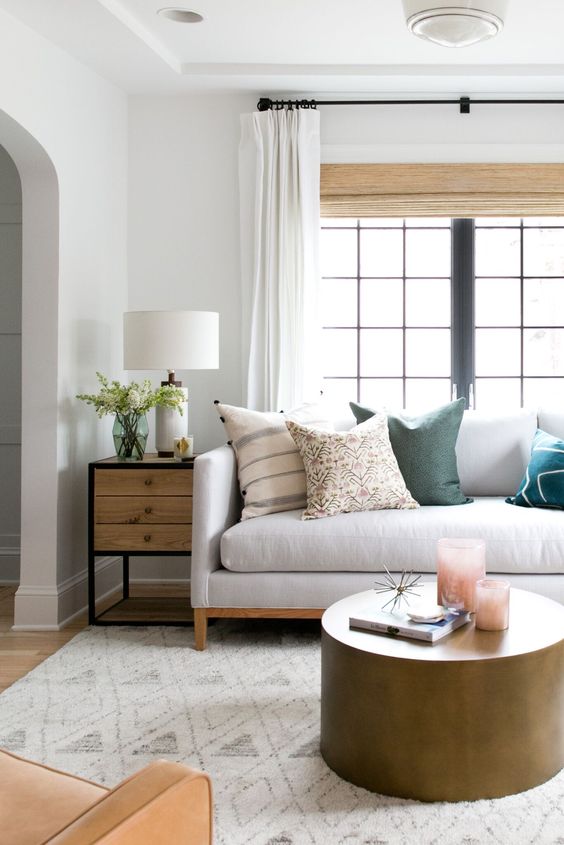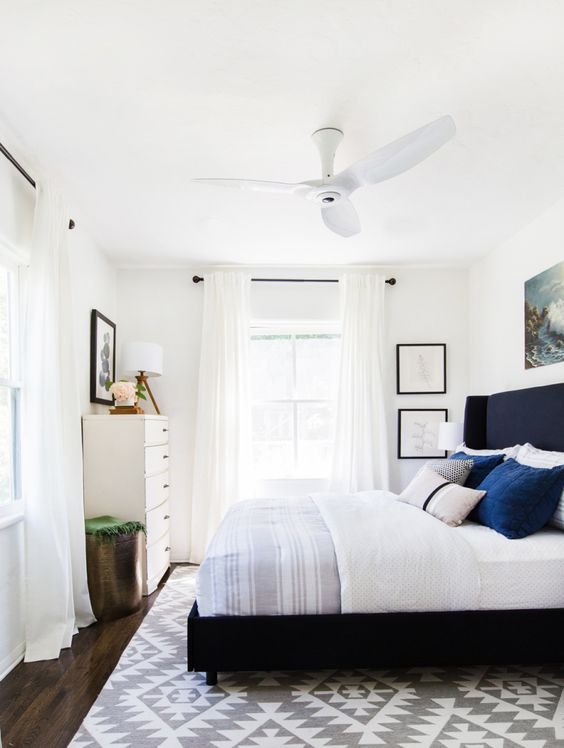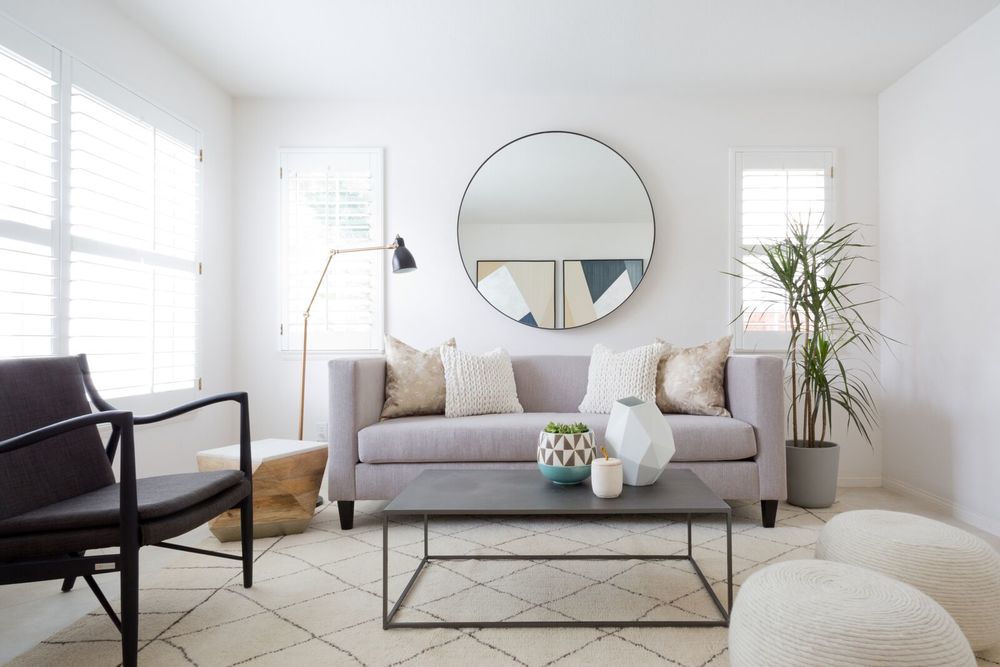Six Easy Ways to Make Your Small Space Feel Bigger
Having been a city-dweller for the past eight years, I've lived in my fair share of small spaces. Our current house in Philadelphia is the largest of those, clocking in at a whopping(!) 1200 square feet. The smallest? A charming two room carriage house apartment with sloped ceilings positioned behind a stately mansion in Richmond, Virginia.
In addition to living in small spaces myself, I've designed quite a few for clients as well, and have become quite familiar with ways to make those small spaces feel larger. It's become second nature to design with these tricks in mind, so I figured it was high time I share these ideas with you so you can try them in your own homes.
These tricks don't involve any major renovations and are easy to implement - in some cases all it will take is a little time and planning, and for others you may need to start setting aside some cash to make them possible. If you need some help making the best use of your small space or don't know where to start, check out my e-design services. I'm here to help!
Six Easy Ways To Make Your Small Space Feel Larger
1. Add mirrors
It's no secret that mirrors have the effect of bouncing light and making a room feel brighter, and you know what the combination of those two things gets you? A space that feels larger! In our master bedroom, I added a large circular mirror to the wall above our dressers and it has made such a difference.
2. Hang curtains high and wide
via Studio McGee
All too often, I see curtains hung in a way that feels like they're "crowding" a window as opposed to framing it nicely. This is usually because the rod is placed too low and doesn't extend beyond the width of the window trim. When curtains are hung this way, they block valuable natural light, make windows feel small, and make a room feel more cramped in general. Hanging them "high and wide" beyond the window frame like I show you in this blog post will correct this problem and open up your space. Be sure to check out that post if you're currently hanging drapes because I go in-depth on how to hang them well!
3. Make sure your furniture is the right scale
via Danielle Moss
This tip is a little more abstract than some of the others since every room is different and will require different pieces of furniture. One good rule of thumb though is that just because your room is small does not automatically mean that your furniture needs to be tiny. For example, you can have a full-sized, but appropriately scaled sofa even if you live in a studio apartment. In other words, an overstuffed La-Z-Boy probably isn't the right answer, but a shallower couch with slimmed-down arms might be!
4. Use a larger rug
via Emily Henderson
This idea is a great piggyback to tip #3, and might seem a little counterintuitive, but it's true! Using a larger rug actually makes a space feel bigger. The reason why is because a small rug (one that feels like the size of a postage stamp relative to the furniture around it) tends to visually break up a room, which in turn has the effect of making a room feel cluttered and crowded. More often than not, I would choose a rug that sits under at least the front feet of the furniture along its edges.
5. Use "airy" furniture
via Square Foot Interior Design
Want to know a sure-fire way to make a room feel larger? Choose "leggy" furniture and/or pieces with glass or lucite as the dominant material. Furniture that has space under and around it, or that is see-through is like a magic trick on the eyes. Take a coffee table for example: if you two that are the same width, length, and height, but one is more like a trunk and the other is a table with an open frame, the latter will feel more airy and light. Those airy and light pieces will make that area feel bigger and less visually heavy.
6. Lighten things up
via Domino
If you have the option to literally go lighter in a room with paint, light-colored furniture, or light-hued textiles, it will open up your space. We experienced this in our current home when painted our walls an almost-white light gray (Benjamin Moore "Winter White"). They were a buttery yellow before, and even though the color wasn't that dark, going light made a huge difference in our row home where every little bit counts.







